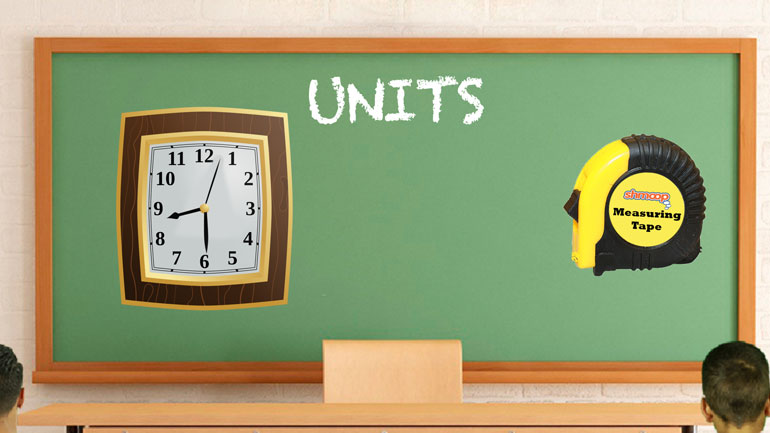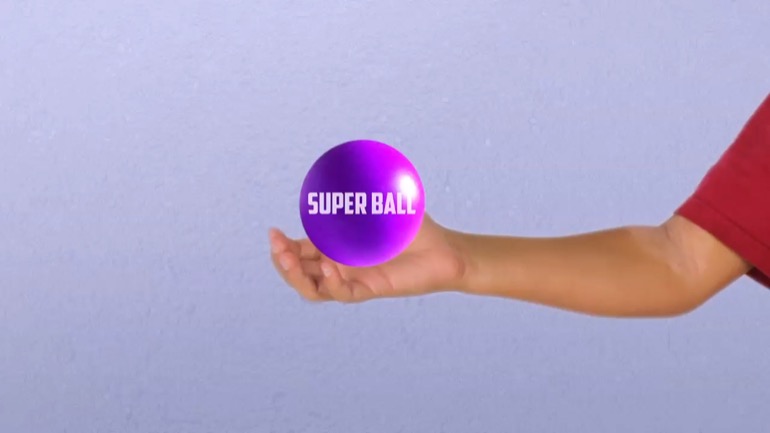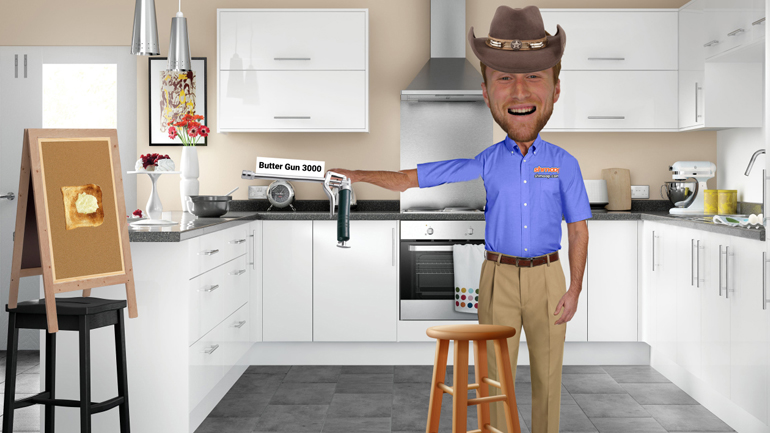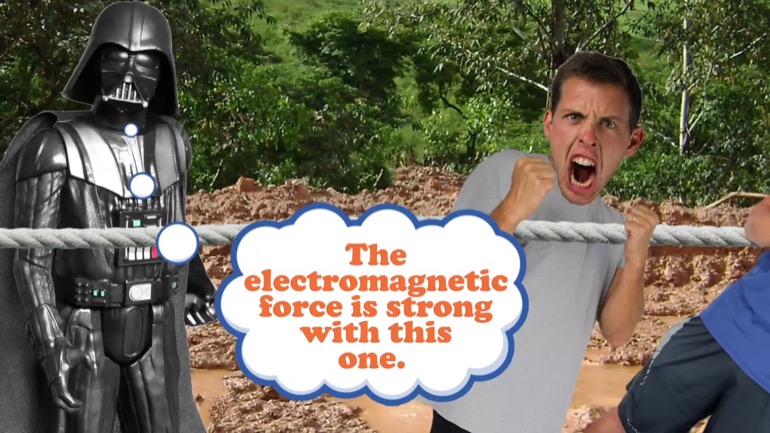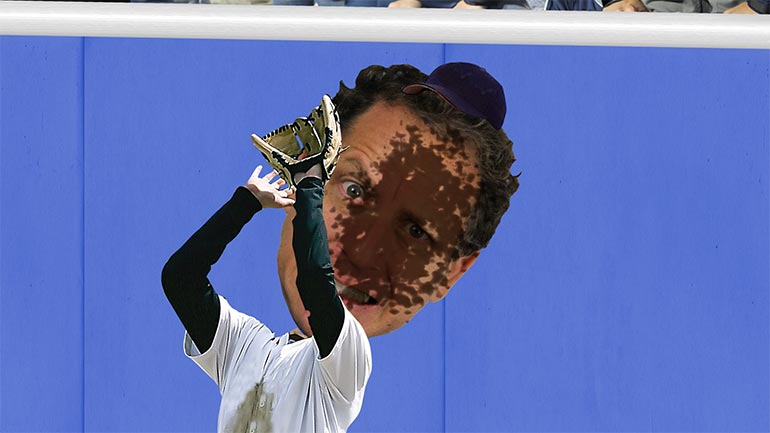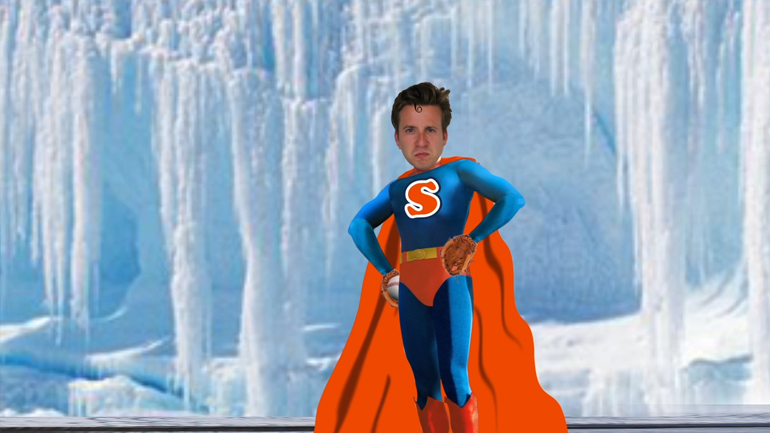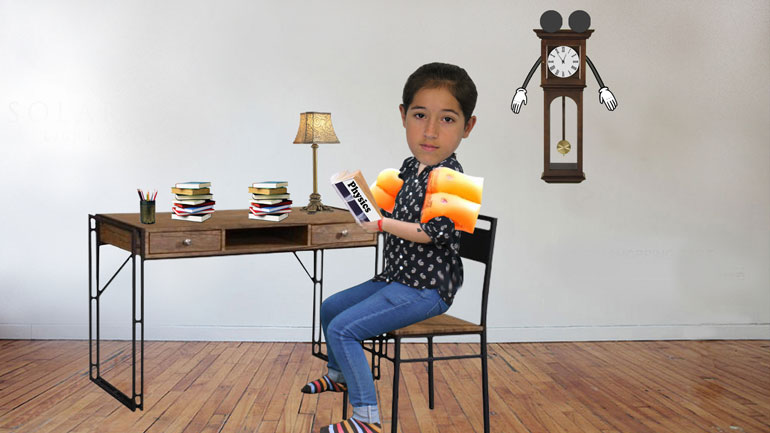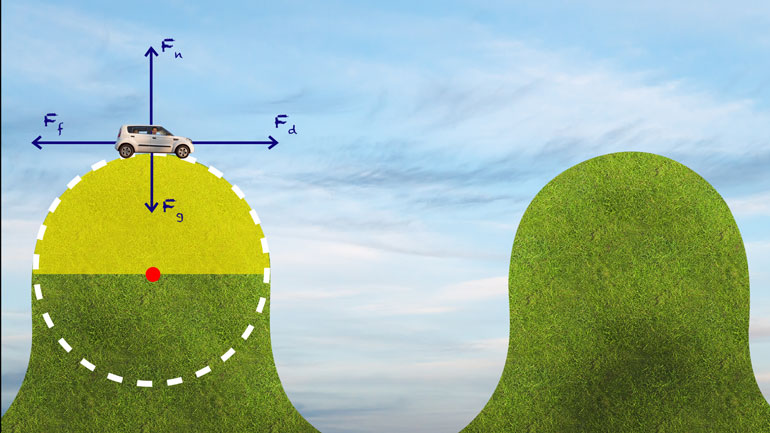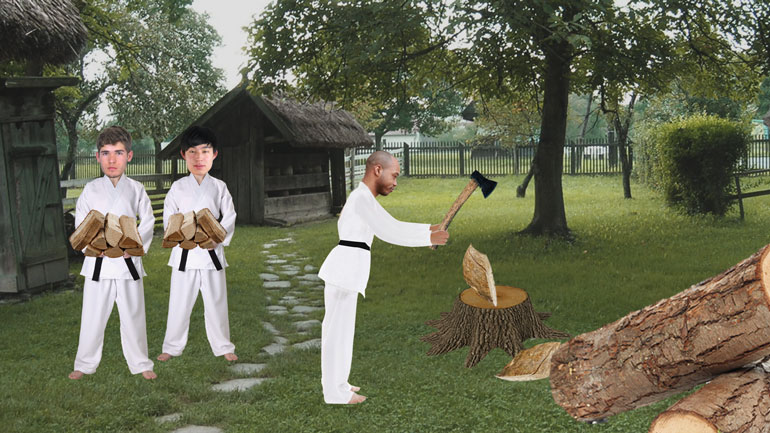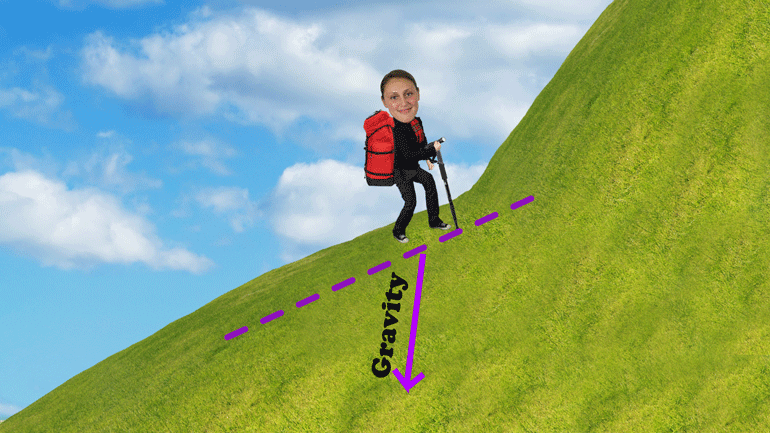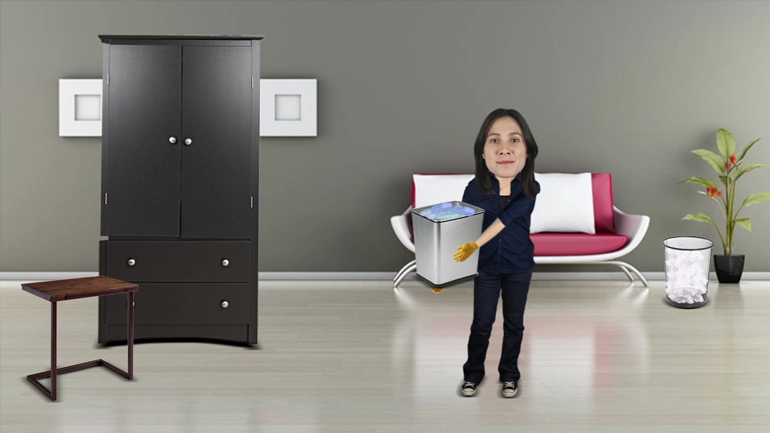ShmoopTube
Where Monty Python meets your 10th grade teacher.
Search Thousands of Shmoop Videos
Physics Videos 34 videos
Isaac Newton. Who was he? Why do we need to know about him? In a physics course, no less? Well, he's only the most famous physicist in history, and...
What are the basics of trigonometry? And why are we learning about this in a physics course? Both good questions. In this video, you'll learn about...
It's time to make our liters and meters work together. Enough of the bickering, right? In this video, we'll do some unit analysis, covering SI Unit...
Physics: An Experiment in Losing Your Marbles 6 Views
Share It!
Description:
It's experiment time! No, we're not digging up any bodies from graveyards - different science class. In this one, we're going to be checking out the speed of a marble, and then analyzing our data in terms of motion mapping, distance vs. time and velocity vs. time. And then, if there's time left over... we may play a game of marbles. We've got them... might as well.
Transcript
- 00:03
An experiment in losing your marbles.....
- 00:22
talking about speed and velocity is great and drawing graphs and motion maps [Car travelling fast and graph appears]
- 00:27
super helpful but it's kind of weird to think about motion without seeing
- 00:31
anything you know actually move so we're going to take care of that right now
- 00:36
yep it's time for an experiment okay first off we need our lab equipment [Lab equipment appears]
Full Transcript
- 00:42
don't worry no Bunsen burners for this one for now we need the following a
- 00:45
meter stick tape masking tape or scotch tape would be ideal because we're going
- 00:49
to be writing on it meaning we'll need a marker a plain old piece of paper which
- 00:53
is going to be origami'd into a launch shoot a hole punch a pencil or pen or
- 00:58
even a twig from the backyard if it's as wide as a pen or a pencil something
- 01:01
fairly long and skinny basically a book not a comic book either something with
- 01:05
an inch or two thick a marble or a ball bearing nothing too wide here something [Assortment of stationary equipment appears on desk]
- 01:09
to keep time with a stopwatch if you're a track coach the rest of us might just
- 01:13
use a stopwatch on our phones clock and we'll also need a long spot of clean
- 01:17
floor here's the whole list hit pause and go start hunting and gathering got
- 01:22
everything or figured out substitutions for everything you're missing good so
- 01:26
what are we going to do with all this stuff we're gonna find out how long it
- 01:30
takes our marble to go different distances which means we'll be dealing
- 01:33
with displacement and velocity all that jazz and we're going to track our data
- 01:37
because we're good scientists like that and then then we'll calculate the
- 01:41
velocities for our measurements but let's not get too far ahead of ourselves [velocity calculation appears]
- 01:44
as we can see this experiment has some assembly required so let's hop to it
- 01:48
first of all fold the paper in half lengthwise then fold that in half again [Piece of paper folded twice]
- 01:52
the other way we're just making it a little stronger so go ahead and tape the
- 01:56
side so it doesn't open at the folds now we're going to make a track for our
- 02:00
marble so fold it into thirds and make sure the track is wide enough for our
- 02:04
marble to roll freely not too wide we don't want it bouncing from side to side [Marble rolls across folded piece of paper]
- 02:08
this is going to be our launch chute eventually we're going to be making a
- 02:12
ramp with this shoot so pick which end is
- 02:15
going to be the bottom where the marble will come rolling out then with our
- 02:18
marker make marks on the sides at 4 centimeters and 8 centimeters up from [Person marks at 4cm and 8cm on piece of paper]
- 02:23
the bottom you'll make these too high up the sides we don't want them higher than
- 02:27
the top of the marble now go ahead and punch holes at those marks save the
- 02:31
scraps for the next time you need confetti and slide your pencil pen
- 02:35
Tinkertoy stick whatever through the holes like this this is going to serve [Pencil through holes in piece of paper]
- 02:39
as our starting gate for the marble so we want to be sure we don't have a
- 02:43
struggle getting the pen free if it's a tight fit just make the punched hole
- 02:46
a little wider and put a couple of pieces of the tape over the top to hold
- 02:49
the walls in place, chute assembly complete time for a little housecleaning
- 02:52
no really we need to clean the floor get a wet towel or a mop and wipe down a [Man fetches a mop]
- 02:57
good long spot for our marble to roll on we don't want our experiment to fail
- 03:01
because we run into a glob of yesterday's oatmeal Plus mom will be
- 03:05
super happy doing science and cleaning the floor major brownie points! [Mum holding brownies and slips on the floor]
- 03:09
Once that's done go ahead and set up the chute tape the bottom to the floor then
- 03:13
rest the top on the book so we have a ramp time for some testing..send your
- 03:17
marble down the chute and see where it goes
- 03:19
is it going straight running into any bumpy patches if the marble is going all [Marble rolling on the floor]
- 03:23
wonky you might need a different patch of floor to work with but if it's all
- 03:26
good time to mark our track use the meter stick to measure a meter from the
- 03:30
end of the chute mark that spot with a piece of tape and write the distance on
- 03:34
the tape go ahead and do that for meters 2 through 5 also you're probably itching
- 03:39
to get started by now but before we can get that marble moving we need to be
- 03:43
ready to collect the data we'll need to have two separate grids one for fast and [Fast and slow grids appear]
- 03:47
one for slow and each grid needs to have 5 spots for distance 5 spots for time
- 03:51
and 5 spots for velocity got that done then let's get rolling go ahead and set
- 03:57
up your starting gate slide the pen or whatever through the set of the holes
- 04:00
closest to the floor then load up the marble into the chute so it's resting [Person places marble into chute]
- 04:04
against the pen get your stopwatch ready pull out the pen and start the stopwatch
- 04:07
when the marble hits the end of the chute stop the clock when the marble
- 04:10
hits the 1 meter mark yay we officially have data since we're using the starting
- 04:15
position close to the ground we'll mark down our measurement
- 04:18
in the slow grid put the distance in the distance column and the time in the
- 04:21
time column we probably didn't need to tell you all that did we will do the
- 04:24
velocity when we're done running all the distances so pause this and find your
- 04:28
marble hopefully didn't end up under the fridge
- 04:30
got it excellent get your starting gate ready load up the marble and time how [Marble released from starting gate]
- 04:35
long it takes to hit the 2 meter mark write your data down and repeat for meters
- 04:39
3 4 & 5 then do it all again for the fast starting position and consider all
- 04:44
this marble chasing your cardio work for the day all right got all your times for
- 04:47
each distance this is a time when distance and displacement have the same
- 04:51
value by the way we should all have 10 measurements let's go ahead and find the
- 04:55
velocities the equation for velocity is the change of displacement divided by [Equation for velocity appears]
- 04:59
change in time for this experiment the starting time and displacement will both
- 05:03
be 0 so we have to divide each distance by the time it took the marble to reach
- 05:07
it so go ahead and record the 10 velocities and now it's time to get [Velocities appear in fast and slow grid columns]
- 05:11
graphic don't worry...just mean we're going
- 05:14
to be drawing take a motion map for both speeds remember motion map arrows to
- 05:19
scale we need to jog your memory go check out the previous lesson that's
- 05:23
also where we learned how to do displacement versus time graphs and
- 05:26
velocity versus time graphs too so why don't we do those too if we have a
- 05:30
favorite graphing program go ahead and use that or rock it old-school with
- 05:34
graph paper and a pencil put both fast and slow data on the same graph that'll [Displacement v time graph appears]
- 05:38
make it easier to compare them if we've done everything right the displacement
- 05:41
versus time graph will have slanted lines and the velocity versus time will
- 05:45
have horizontal lines and don't forget to title the graph, label the axes etc no
- 05:50
shortcuts we're going the long way here ok awesome we've got a table of data
- 05:55
we've got a motion map and graphs let's take a minute to think about what we've
- 05:59
learned and ask ourselves some questions did the marbles roll at at constant
- 06:03
velocity for the whole 5 meters was it easier to read the motion map or the [Questions appear on clipboard]
- 06:06
displacement versus time graph looking at your displacement for his time graphs
- 06:10
what is the difference between your fast and slow plots what does this tell you
- 06:14
where the velocities you calculated for the different trials about the same and
- 06:18
what could cause a difference in those how much faster was the fast velocity
- 06:22
over the slow one is this what you expected?
- 06:24
why or why not? And last but not least what went wrong in the
- 06:28
experiment and what worked really well are you feeling really ambitious you [Man looking excited]
- 06:32
want to be a full-on real-life scientist science isn't about just doing math
- 06:37
drawing graphs and rolling marbles all over the place a good piece of science
- 06:41
needs a good lab report to put it all together so let's look at what goes into
- 06:45
a lab report and if you're feeling like a science superstar you can write one up [Boy band playing on stage]
- 06:49
on your own for this marble lab first we've got a heading that's going to have
- 06:53
your name your partner's names if you had any and your teachers names any
- 06:57
stuff that would help the report get back to you if it ended up being in the
- 07:00
lost and found any report needs a title get creative call it losing my marbles [Title of report appears on page]
- 07:04
or the rolling marbles of time or just be boring and call it marble lab then we
- 07:09
want to write an abstract say what the experiment was meant for give a brief
- 07:12
description of how you did it and then a quick wrap-up of the results this is a
- 07:16
short summary about 200 words give or take then we can tackle the official
- 07:20
intro this is where we set the mood for the report kind of like lighting candles [Man in a bath tub]
- 07:24
and putting on our Gregorian chants playlists explain why you are doing the
- 07:28
experiment and what you are testing for and talk about the math that you'll be
- 07:31
using everyone wants a warning when there's
- 07:33
math ahead but don't go crazy here you want 400 words max then we have our
- 07:38
materials and methods section this explains what you used in what you did
- 07:42
with it did you have any problems any malfunctions this is the detail section [Materials and Method section points appear]
- 07:45
try to keep it between 300 and 750 words Up next results here will show the data
- 07:51
in a table or graphs or both just so happens to be a both huh if your data is
- 07:55
pretty polished you shouldn't have to do a lot of explaining here so keep it
- 07:58
short 50 to 250 words last is the discussion section you can cut loose
- 08:02
with this gain any valuable insights to the secrets of the universe as the
- 08:05
marble rolled on anything you took away that could apply to real life anything
- 08:09
surprise you if you're stumped take some more time to think about the experiment
- 08:12
as a whole and look we know that this is a big job now how many people write [Marble rolls on a desk]
- 08:16
reports just for the fun of it and the people who do they're awesome and
- 08:19
amazing and should be on a watch list somewhere not a bad list to be on
Related Videos
When you're about to marry the love of your life, not many things could stop you. However, finding out that your future hubby is keeping his crazy...
Here at Shmoop, we work for kids, not just the bottom line. Founded by David Siminoff and his wife Ellen Siminoff, Shmoop was originally conceived...
ACT Math: Elementary Algebra Drill 4, Problem 5. What is the solution to the problem shown?
AP® English Literature and Composition Passage Drill 1, Problem 1. Which literary device is used in lines 31 to 37?
AP® English Literature and Composition Passage Drill 2, Problem 1. What claim does Bacon make that contradicts the maxim "Whatsoever is delig...


